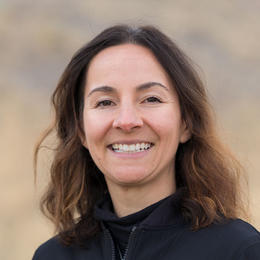LIMB HISTORY
Bob and Marinda Trout are the co-founders of the Loveland Initiative for Monarch Butterflies (LIMB). Here is the tale of how these warm-hearted, conservationists took it upon themselves to create something positive after reading such a disheartening story in the Natural Resources Defense Council (NRDC). In the spring of 2014, NRDC released an article, As monarch butterflies plummet, it's time to rethink the widespread use of our nation's top weedkiller.
In summary, the article states that, “Glyphosate was last approved by EPA in 1993 before the adoption of genetically modified crops that are tolerant to its use, known as “Roundup Ready” crops. Now, however, Roundup Ready corn and soy dominate the agricultural system and the use of glyphosate has skyrocketed tenfold to 182 million pounds annually. As a result, milkweed – which is the sole food source for monarch butterfly larvae – has all but been eliminated from farm fields across the Midwest.” The population of monarch butterflies has been decreasing at an alarming rate since the introduction of glyphosate. At last count in 2014, there were an estimated 33 million monarchs, down from an estimated billion in the late 1990’s.
The article stated some take-action steps, one of which was to help create milkweed-friendly habitat. And that is exactly what the Trout’s set out to do!
LIMB’s mission - Repopulate milkweed in order for the monarch butterfly migration to continue!
Propagating milkweed
The milkweed seeds were collected in the fall of 2014 from adult plants near the Chilson Center in Loveland, Colorado. Once the seeds were collected it was important to separate the coma (the white fuzz that allows the seed to float in the air for wide dispersal).
Fun Fact - The coma was collected during WWII to fill life preservers for fighter pilots.
In order to strip the coma, Bob came up with a creative way to get the seed clean, with none other than his Dyson vacuum. Sucking up the seeds where the centrifugal force stripped the coma away and allowed for the heavier seed to fall to the bottom. Although shaking seeds in a paper bag works well, the vacuum was a lot more fun according to Trout!
After stratifying (simulating natural winter conditions that a seed must endure before germination) the seeds in their home refrigerator it was time to start growing the seeds. The 6th graders at Walt Clark Middle School helped propagate these seeds at their school greenhouse, where 1,200 milkweed seedlings came to be!
Finding homes for milkweed seedlings
With 1,200 milkweed seedlings, it was time to find homes for creating milkweed-friendly habitats during the spring/summer of 2015. One of those homes was at a private residence in Loveland, Colorado where 14 volunteers helped plant 600 milkweeds. Another 200 were donated to Wildlands Restoration Volunteers which used the seedlings in some of their planting projects. 100 were handed out at the Poudre River Festival and the remaining 100 were donated to Habitat Hero. On Father’s Day, Habitat Hero had a great volunteer event in which over 30 volunteers planted milkweed along the Poudre River Trail in Greeley, Colorado at the Poudre Learning Center.
Future of LIMB
The Trout’s plan on propagating at least another 1,200 plants each year for the next 5 years in hopes of supporting the monarch butterfly. This is a great success story where individuals are making a BIG difference by creating pollinator-friendly habitat in order to save the monarchs!
Contact Information
If you are interested in learning more about LIMB, or volunteering for one of their projects contact Bob Trout at 970-412-9690




